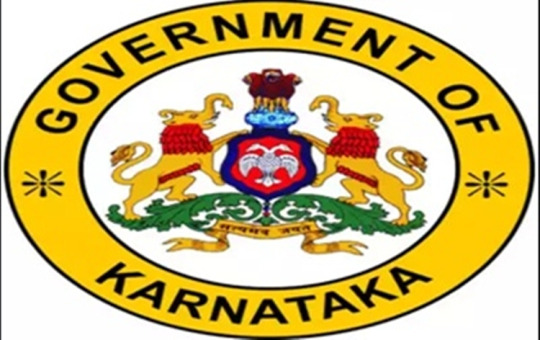#EfficientProcurement
Text
Understanding Procurement Savings: Navigating Hard and Soft Elements
Originally Published on: SpendEdge |Understanding Procurement Savings: What’s Hard and What’s Soft
Key Insights:
Procurement Strategies: Achieving savings in procurement involves a blend of strategies, including analysis, operational improvements, supplier consolidation, cost-saving initiatives, and collaboration.
Hard vs. Soft Savings: While hard savings are tangible and directly measurable, soft savings are indirect and require estimation. Both are crucial for organizational health.
Cost Avoidance: Preemptive actions to avoid potential costs, such as negotiation and process optimization, are part of cost-saving efforts.
Balancing Act: Striking a balance between hard and soft savings in Lean initiatives is essential for sustainable improvement.
Understanding Hard and Soft Savings:
Hard savings are easily quantifiable and directly reduce expenses, while soft savings are more challenging to measure and often involve intangible benefits.
Soft Savings Categories:
Intangible Benefits: These include improved morale, shorter lead times, and increased trust, which are challenging to assign a direct dollar value.
Projection-Based Savings: Benefits that rely on estimates and projections, making it difficult to determine their precise financial impact.
Cost Avoidance Explained:
Cost avoidance entails preemptive actions to circumvent potential costs, such as negotiating price reductions or streamlining processes.
Balancing Hard and Soft Savings:
Achieving equilibrium between hard and soft savings in Lean initiatives ensures sustainable progress and holistic transformation. This requires clear objectives, ongoing evaluation, and a culture of engagement.
Maximizing Procurement Savings: Effective Strategies and Tactics:
Comprehensive Analysis: Scrutinize procurement processes, assess supplier contracts, and explore alternative sourcing avenues.
Operational Efficiency: Streamline procurement operations and leverage technology solutions like e-procurement systems.
Consolidate Supplier Relationships: Work with fewer suppliers to negotiate better terms and simplify the procurement process.
Cost-Saving Initiatives: Implement measures to trim costs across the supply chain, such as optimizing inventory levels and strategizing logistics.
Cross-Functional Collaboration: Collaborate closely with internal stakeholders to uncover cost-saving opportunities.
SpendEdge Solutions:
Cost Components and Price Drivers Analysis: Analyze cost components and key drivers influencing prices within the supply chain.
Supplier KPIs and SLAs Development: Establish robust supplier KPIs and SLAs aligned with organizational objectives.
Cost Optimization Strategies: Develop tailored strategies to streamline procurement processes and maximize cost savings.
Conclusion:
Effective procurement savings require a multifaceted approach that addresses both hard and soft savings. By leveraging actionable strategies and partnering with specialized providers like SpendEdge, businesses can optimize their procurement processes and drive sustainable growth.
Contact us.
0 notes
Text
Mastering Procurement: A Comprehensive Guide to Key Tender Categories
In the multifaceted world of procurement, various tender categories play crucial roles in shaping our environment and society. From civil projects that lay the foundation for progress to furniture that adorns our spaces, each category holds its unique significance. In this post, we embark on an informative journey to explore key tender categories: Civil Tenders, Furniture Tenders, GOK Tenders, Vehicle Hiring Tenders, and Document Scanning Tenders. Let's delve deeper to understand the pivotal roles they play in various sectors.
Civil Tenders: Pioneering Infrastructure Development
Civil tenders are the driving force behind the construction of vital infrastructure, encompassing projects that improve transportation, accessibility, and public services. These tenders play a pivotal role in enhancing the quality of life for communities. Let's explore some key types of civil tenders, including Road Construction Tenders, Bridge Construction Tenders, Public Building Construction Tenders, Sewer and Drainage Tenders, Airport Construction Tenders, Railway Construction Tenders, Water Supply and Treatment Tenders, Port and Harbor Construction Tenders, and Tunneling Tenders. These tenders are instrumental in shaping the world we live in.
Civil Tenders: Building the Foundations of Progress
Road Construction Tenders focus on the development and maintenance of road networks, ensuring safe and efficient transportation. Bridge Construction Tenders play a crucial role in connecting communities over water bodies and challenging terrains in civil tenders. Public Building Construction Tenders encompass the creation of public structures such as schools, hospitals, government offices, and community centers, providing essential public services. Sewer and Drainage Tenders ensure effective sewage and drainage systems, vital for community well-being. Airport Construction Tenders drive the construction and expansion of airports, which is crucial for connectivity and economic development. Railway Construction Tenders encompass the lifelines of transportation, covering rail lines, stations, and associated infrastructure. Water Supply and Treatment Tenders address the fundamental need for clean water through water treatment plants, pipelines, and reservoirs.
Furniture Tenders: Crafting Functional and Aesthetic Spaces
Furniture tenders play a pivotal role in our lives, inviting skilled craftsmen and manufacturers to provide essential pieces that adorn our homes, offices, and public areas. These tenders ensure that the furniture we use is not only functional but also aesthetically pleasing and durable, greatly influencing the design and functionality of the spaces where we live and work. Let's explore various types of furniture tenders, each tailored to specific needs and industries.
Furniture Tenders: Shaping Our Living and Working Spaces
Office Furniture Tenders are essential for sourcing furniture that populates our workplaces, from desks to ergonomic chairs and storage solutions, ensuring that offices are equipped for efficiency and comfort. Hospital Furniture Tenders address the unique needs of healthcare settings, including hospital beds, medical carts, and specialized furnishings to ensure patient comfort and medical functionality. School Furniture Tenders encompass classroom desks, chairs, and library furnishings, facilitating a conducive environment for students in educational institutions. Residential Furniture Tenders focus on the furnishings used in homes, including sofas, beds, dining sets, and wardrobes, playing a crucial role in creating comfortable living spaces. Outdoor Furniture Tenders cover park benches, picnic tables, patio sets, and other items designed for outdoor use, enhancing public spaces. Hotel and Hospitality Furniture Tenders include guest room furnishings, restaurant seating, and lobby decor, contributing to the inviting guest spaces in the hospitality industry. Library Furniture Tenders encompass shelving units, study tables, and reading chairs, fulfilling the specialized furnishings needs of libraries. Government Office Furniture Tenders focus on equipping public buildings and government offices with functional and durable furniture to meet the specific requirements of government institutions.
GOK Tenders: Leading Karnataka's Progress with Efficiency
Government of Karnataka (GOK) Tenders are pivotal in promoting transparency and efficiency within the state's procurement processes. They cover an extensive range of services, spanning from construction and infrastructure development to cutting-edge technology solutions. These tenders play a vital role in propelling Karnataka's growth and development, fostering participation from diverse sectors.
In Karnataka State, various areas have witnessed substantial procurement activity. Notably, Pipe Laying Tenders emerge as a prominent category, reflecting the importance of infrastructure development. Temporary Staffing Tenders closely follow, underscoring the need for temporary workforce solutions in the state. Furthermore, Vehicle Hiring Tenders serve a significant function by providing access to a fleet of vehicles for diverse purposes.
Additionally, significant activity is observed in the categories of Bus Stop and Railway Station Shop Rental Tenders, along with Road and Drain Tenders. These categories collectively represent the diverse procurement needs in Karnataka, spanning infrastructure, workforce, transportation, and the provision of public amenities. The procurement landscape in the state mirrors its multifaceted growth and development trajectory, facilitated by the diligent implementation of GOK Tenders.

Vehicle Hiring Tenders: Fueling Mobility and Logistics
Vehicle hiring tenders hold a crucial role for organizations that depend on transportation as a fundamental part of their operations. These tenders provide businesses with the means to access a cost-effective fleet of vehicles, thus ensuring seamless logistics, mobility, and transportation services. Let's explore various types of vehicle hiring tenders, each addressing unique mobility needs.
Empowering Mobility through Diverse Tenders
Car Rental Tenders are integral for organizations seeking access to a range of cars, including sedans and SUVs, to support a multitude of purposes, from official use to transportation services. Bus Rental Tenders focus on the hiring of buses, catering to a wide range of needs, including public transportation, school buses, and tour services. Taxi Services Tenders, the backbone of urban and intercity transportation, primarily seek service providers to meet the ever-growing demand for taxi services. Ambulance Services Tenders, vital for healthcare and emergency response, concentrate on hiring ambulance service providers to ensure timely and critical medical care. In urban areas, Two-Wheeler Rental Tenders meet the need for quick and efficient personal transportation. Businesses and construction projects rely on Truck and Commercial Vehicle Rental Tenders for efficient logistics and transportation of goods. Luxury Vehicle Rental Tenders provide high-end car rental options for special events, VIP transportation, and premium services. With the rise of electric mobility, Electric Vehicle (EV) Rental Tenders focus on electric vehicle rentals, including electric cars and e-scooters. Government Vehicle Hiring Tenders, issued by government agencies, frequently cover various needs, including sedans and SUVs, for official use.

Document Scanning Tenders: Digitizing Information for a Digital Future
In the age of digitization, document scanning tenders hold great importance. They invite service providers to digitize extensive document archives, making information more accessible and secure. These tenders play a vital role in preserving historical records, enhancing information management, and facilitating the transition to a digital future.
Unlocking the Potential of Document Scanning Tenders
Bulk Document Scanning Tenders are the gateway to converting vast volumes of paper documents into digital formats, ensuring both preservation and accessibility. Microfilm and Microfiche Scanning Tenders, with a focus on historical records stored on microfilm and microfiche, act as a bridge to the digitization of invaluable content. Large Format Document Scanning Tenders benefit organizations with oversized documents like blueprints and maps, ensuring the digital preservation of these critical materials. Book and Manuscript Scanning Tenders are the choice for libraries, archives, and museums seeking to digitize books, manuscripts, and ancient texts, fostering accessibility and preservation. OCR (Optical Character Recognition) Scanning Tenders are transformative, converting scanned images into machine-readable text, enhancing searchability and utility. Data Capture and Extraction Tenders focus on mining specific information from scanned documents, such as invoices or forms. Vital for sensitive data, Secure Document Scanning and Storage Tenders address both secure scanning and storage, adhering to stringent data protection regulations.

Conclusion: The Fabric of Procurement
Procurement weaves a diverse tapestry through various tender categories, shaping our world. Civil tenders build infrastructure, while furniture tenders influence our living spaces. GOK tenders drive efficiency in Karnataka. Vehicle hiring tenders power mobility, and document scanning tenders embrace the digital age. These categories are more than transactions; they're catalysts for progress, elevating our lives and paving the way for innovation. Understanding these categories reveals the significance of procurement in our modern society. It's not just about transactions; it's about transforming our world and building a better future.
For inquiries and to email your questions, please contact us at [email protected].
For additional details, you can explore Tendersniper at: https://tendersniper.com/

#ProcurementInsights#TenderCategories#InfrastructureDevelopment#FurnitureTenders#GOKTenders#VehicleHiring#DocumentScanning#CivilProjects#DigitalTransformation#EfficientProcurement#GovernmentProcurement#MobilitySolutions#InfrastructureGrowth#AestheticSpaces#InformationManagement#facebook#instagood#tender#tendersniper#blog#instadaily#tumblr things#twitter#tumblrtextpost#government
0 notes
Text
Multilevel Purchase Order Approval in Odoo
Achieve efficient procurement through the multilevel approval of purchase order excellence in Odoo with Bassam Infotech. 👇
#Odoo#BusinessSoftware#ERPSystem#StreamlineProcesses#BusinessAutomation#EfficiencyBoost#DigitalTransformation#BusinessSolutions#SoftwarePlatform#EnterpriseManagement#PurchaseOrderApproval#EfficientProcurement#WorkflowAutomation#StreamlinedProcesses#BusinessEfficiency#ProcurementManagement#odoocrm#explorerpsystem#odooimplementation#odooexperience#erpsolutions#odooerpsoftware#odoointegration
0 notes
Text

Top Logistics Rate Contract Management Companies
Optimize Logistics Procurement with Rate Contract Management
In the logistics industry, Rate Contract Management solutions from experts ensure that you get the best rates from trusted vendors.
Read : https://bit.ly/3OoN9XL
#RateContractManagement#LogisticsSolutions#EfficientProcurement#ContractManagementsolutions#ContractManagement#logistics#USA#contractmanagementinUSA
0 notes
Text
Understanding Procurement Savings: Navigating Hard and Soft Elements
Originally Published on: SpendEdge |The Role of ChatGPT in Shaping Tomorrow’s Supply Chain
Key Insights:
Procurement Strategies: Achieving savings in procurement involves a blend of strategies, including analysis, operational improvements, supplier consolidation, cost-saving initiatives, and collaboration.
Hard vs. Soft Savings: While hard savings are tangible and directly measurable, soft savings are indirect and require estimation. Both are crucial for organizational health.
Cost Avoidance: Preemptive actions to avoid potential costs, such as negotiation and process optimization, are part of cost-saving efforts.
Balancing Act: Striking a balance between hard and soft savings in Lean initiatives is essential for sustainable improvement.
Understanding Hard and Soft Savings:
Hard savings are easily quantifiable and directly reduce expenses, while soft savings are more challenging to measure and often involve intangible benefits.
Soft Savings Categories:
Intangible Benefits: These include improved morale, shorter lead times, and increased trust, which are challenging to assign a direct dollar value.
Projection-Based Savings: Benefits that rely on estimates and projections, making it difficult to determine their precise financial impact.
Cost Avoidance Explained:
Cost avoidance entails preemptive actions to circumvent potential costs, such as negotiating price reductions or streamlining processes.
Balancing Hard and Soft Savings:
Achieving equilibrium between hard and soft savings in Lean initiatives ensures sustainable progress and holistic transformation. This requires clear objectives, ongoing evaluation, and a culture of engagement.
Maximizing Procurement Savings: Effective Strategies and Tactics:
Comprehensive Analysis: Scrutinize procurement processes, assess supplier contracts, and explore alternative sourcing avenues.
Operational Efficiency: Streamline procurement operations and leverage technology solutions like e-procurement systems.
Consolidate Supplier Relationships: Work with fewer suppliers to negotiate better terms and simplify the procurement process.
Cost-Saving Initiatives: Implement measures to trim costs across the supply chain, such as optimizing inventory levels and strategizing logistics.
Cross-Functional Collaboration: Collaborate closely with internal stakeholders to uncover cost-saving opportunities.
SpendEdge Solutions:
Cost Components and Price Drivers Analysis: Analyze cost components and key drivers influencing prices within the supply chain.
Supplier KPIs and SLAs Development: Establish robust supplier KPIs and SLAs aligned with organizational objectives.
Cost Optimization Strategies: Develop tailored strategies to streamline procurement processes and maximize cost savings.
Conclusion:
Effective procurement savings require a multifaceted approach that addresses both hard and soft savings. By leveraging actionable strategies and partnering with specialized providers like SpendEdge, businesses can optimize their procurement processes and drive sustainable growth.
Contact us.
0 notes
Text
Comparing Cloud-Based Procurement Platforms: Coupa vs. Ariba
Originally Published on: SpendEdge |Cloud-Based Sourcing Procurement Platforms: A Comparative Analysis of Coupa vs. Ariba
Platform Overview: SAP Ariba and Coupa stand at the forefront of cloud-based procurement solutions, offering comprehensive approaches to procurement, supplier management, and spend optimization.
Features and Benefits: SAP Ariba presents a suite of features including procure-to-pay, sourcing, contract management, analytics, and supplier management. Coupa mirrors these functionalities and extends them with additional features like expense management, invoicing, and analytics. Both platforms aim to streamline operations, cut costs, and foster sustainable growth.
#ProcureTech #SupplierSolutions
Drawbacks: Despite their benefits, both platforms have their drawbacks, such as usability issues, integration complexities, and cost considerations, necessitating careful assessment by organizations.
User Perspectives: From requestors to tech administrators, each platform caters to different user needs and priorities. Understanding these perspectives is crucial for making the right platform choice.
Detailed Software Explanation: Coupa and Ariba
SAP Ariba: Redefining Procurement with Digital Innovation
Transform procurement processes with SAP Ariba's cloud suite, integrating sourcing, procurement, and supplier management. Access a global network of over 5 million suppliers across 190 countries for seamless collaboration and optimized operations.
Features & Benefits of SAP Ariba:
Unlock SAP Ariba's full potential with its comprehensive feature set:
#AribaEdge #EfficientProcurement
Drawbacks of SAP Ariba:
Be mindful of potential drawbacks like usability issues, integration complexities, and cost implications.
Coupa: Empowering Business Spend Management with Simplicity
Simplify procurement, expenses, and supply chain planning with Coupa's user-friendly web platform. Drive spend optimization, enhance visibility, and maintain control over expenses with AI and machine learning capabilities.
Features & Benefits of Coupa:
Leverage Coupa's features to the fullest extent:
#CoupaEase #ExpenseControl
Drawbacks of Coupa:
Consider potential challenges including complexity, integration hurdles, and cost factors.
Request for a Free Proposal
Evaluate various parameters to decide between Coupa and Ariba. Consider perspectives from requestors, buyers, contract managers, sourcing managers, suppliers, reporting consumers, and tech administrators for an informed decision.
How SpendEdge Can Assist in Choosing the Best Procurement Platform
Leverage SpendEdge's expertise in procurement intelligence and supplier management for tailored solutions. Benefit from market research, vendor assessment, customized recommendations, supplier performance evaluation, risk assessment, and ongoing support.
#SpendEdgeInsights #ProcureExpertise
Conclusion
Both SAP Ariba and Coupa offer robust cloud-based procurement platforms tailored to streamline processes and manage supplier relationships. SAP Ariba stands out with its extensive features and global reach, while Coupa excels in user-friendliness and AI-driven analytics. Choose the platform that best aligns with your organization's goals and objectives for optimal outcomes.
Contact us.
1 note
·
View note